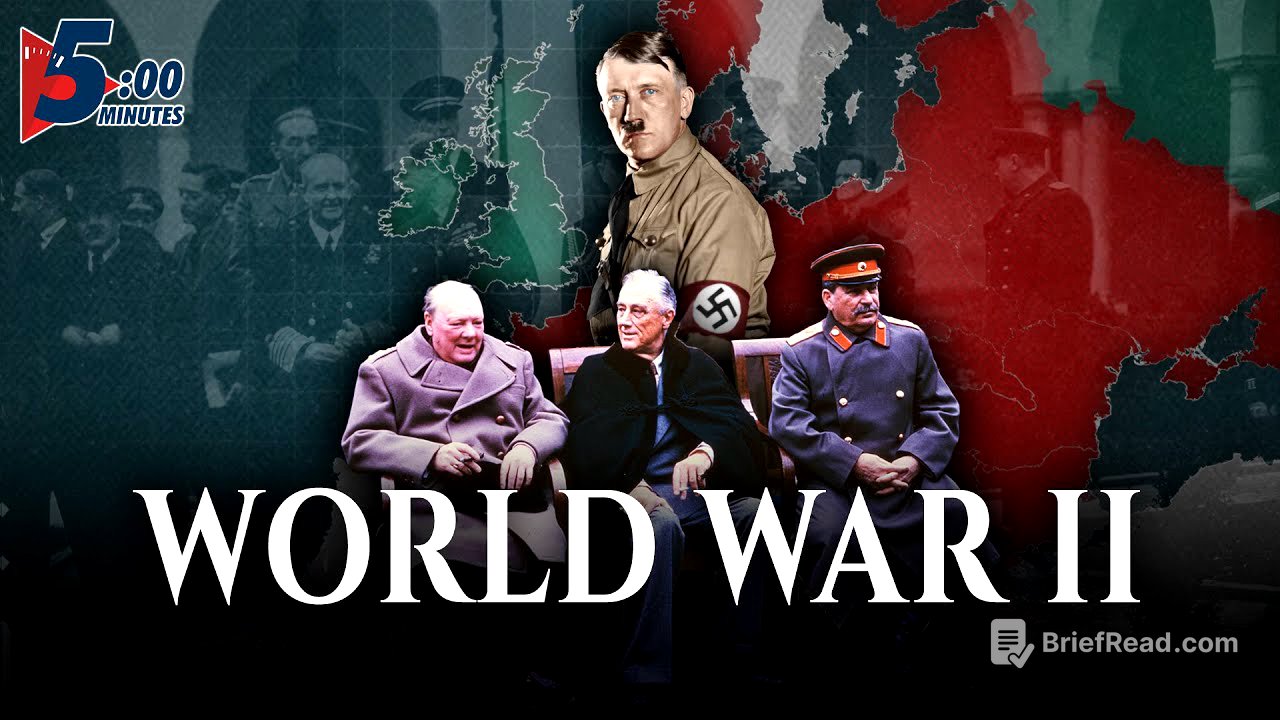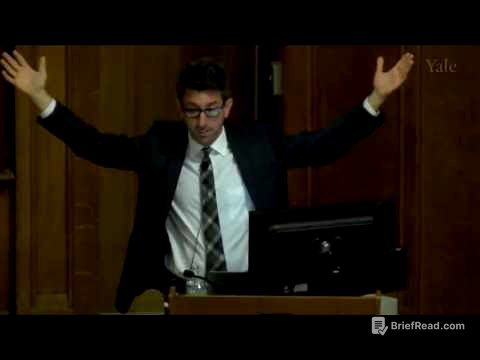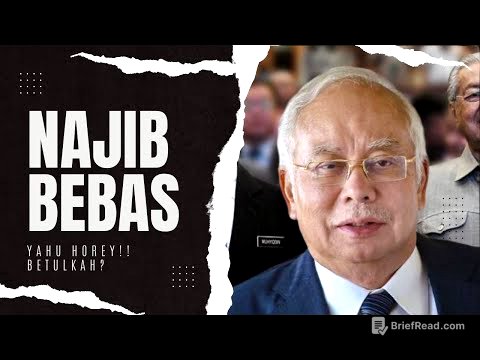TLDR;
This video provides a concise overview of World War II, covering its major events, key players, and lasting consequences. It explains the rise of Hitler and the Axis powers, the major theaters of war, and the eventual Allied victory. The video also touches on the immense human cost of the war and its impact on the global political landscape, including the formation of the United Nations and the emergence of the US and the Soviet Union as superpowers.
- Rise of Axis Powers and initial expansion.
- Key battles and turning points in Europe and the Pacific.
- Allied victory and the war's devastating consequences.
- Formation of the United Nations and shift in global power dynamics.
The Rise of the Axis Powers [0:11]
The video begins by outlining the key players in World War II: the Axis powers (Germany, Italy, and Japan) against the Allied forces (Britain, the Soviet Union, the US, and China). It explains how Hitler rose to power in 1933, capitalizing on the economic depression and German resentment towards the Treaty of Versailles. Hitler's agenda included rebuilding the German military and expanding German territory, actions that violated the treaty. Initially, France and Britain adopted a policy of appeasement, allowing Germany to unite with Austria and annex parts of Czechoslovakia.
The Outbreak of War and German Blitzkrieg [1:04]
World War II officially began in September 1939 when Germany invaded Poland, prompting Britain and France to declare war. Germany swiftly conquered Denmark, Norway, Belgium, the Netherlands, and France by mid-1940 using the "blitzkrieg" strategy, a rapid and overwhelming offensive. The British Expeditionary Force was trapped at Dunkirk but managed to evacuate. Germany then launched an aerial attack on Britain, known as the Blitz, but failed to overcome the Royal Air Force.
Expansion of the War and Operation Barbarossa [2:08]
Italy, under Mussolini, expanded the war by invading parts of North Africa and Greece. In 1941, Germany launched Operation Barbarossa, a surprise invasion of the Soviet Union. Behind the German lines, millions of Jews and Communists were exterminated. Despite initial successes, the invasion of the USSR became Germany's first major setback due to the country's size, harsh winters, and Soviet resistance.
The Pacific Theater and Turning Points [3:04]
In the Pacific, Japan seized Manchuria in 1931 and launched a surprise attack on Pearl Harbor in December 1941, prompting the US to join the war against the Axis powers. Japan expanded throughout Southeast Asia but was halted after losing the Battle of Midway in 1942. In the same year, Germany and Italy suffered a decisive defeat against the British at the Battle of El Alamein in North Africa.
The Allied Victory and Aftermath [3:57]
In 1943, Mussolini's regime collapsed, and the Allies landed in Sicily. The Soviets advanced across Eastern Europe, and in June 1944, the D-Day invasion marked the beginning of the liberation of France. Allied forces closed in on Germany, leading to its surrender in May 1945 after the Soviet invasion of Berlin and Hitler's suicide. Following atomic bombings on Hiroshima and Nagasaki and the Soviet invasion of Manchuria, Japan surrendered in September 1945.
Consequences and the New World Order [5:12]
World War II resulted in approximately 60 million deaths. The United Nations was created, and efforts toward political and economic integration began, particularly in Europe. The influence of European powers declined, leading to decolonization in Africa and Asia. The US and the Soviet Union emerged as rival superpowers, setting the stage for the Cold War.









